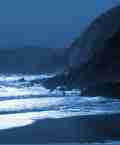 |

|
|||
American Visitors - 1942American visitors to Ireland usually talk about the scenery and the warmth of the people they meet. In 1942 they did exactly the same, but also prepared for the war in Europe. Most of them were young men, on their first trip away from home, and although circumstances were different, they were very similar to today’s young American travellers in their eagerness to experience the beauty and hospitality of the island of Ireland.Irelandseye presents a look back at the ‘Yank invasion’ of the early 1940s, using extracts from Home Away From Home by Mary Pat Kelly, published by Appletree Press.
Fishing was my special hobby. I did a lot of fishing on Lough Erne. See, we went in there and took over a camp that had been built by American workers. They were just leaving. They had been there since way before Pearl Harbor. It was kind of a secret base. And their part in building it was secret, too. It was well camouflaged and it was an inland sea-plane base. We were there to guard that base.Serious military preparations formed the true subtext of the Gl's reports…Leighton recalls a moment that put his lovely lakeside stay in context. I knew that base was made for sea planes to fly Atlantic patrols. It was very well camouflaged. Those Quonset huts were all out there among the trees. I remember one day a guy from our company was hanging out his laundry on a clothes line he'd rigged up from tree to tree. Our sergeant in the engineers was an American Indian. His name was Milt Sessions. He was from the Black Hills of South Dakota. He had a permanent rank of sergeant that was given him by Congress. No one could break him.The people of Northern Ireland had no way of knowing whether these friendly GIs would survive beyond their youth. Indeed, the youth was the one characteristic the Gls shared. They came from vastly different backgrounds, but all were young and for the vast majority, Pearl Harbor had triggered a precipitous jump from civilian life to the military. In a matter of hours, for example, Joe Larkin from New Jersey went from college student to second lieutenant in the army. He would become part of the wave of US soldiers to arrive in Northern Ireland in April 1942. I grew up in Englewood, a little town in the northern part of New Jersey. I went to school there at St Cecilia's Grammar School and Dwight Morrow's High School and left to go to Massachusetts Institute Technology, class of 1941. I was at MIT when the Second World War began. I was glued to the radio on 7 December when Pearl Harbor was attacked. The next day, in my Reserved Officer's Training Corps meeting, I was told, "Cadet Larkin, report to me after class." Right then I was ordered to active duty; I hadn't even graduated.This article continues with more reminiscences from American soldiers stationed in Northern Ireland in 1942, in preparation for further military operations in continental Europe. |
[ Back to top ]
All Material © 1999-2006 Irelandseye.com and contributors
